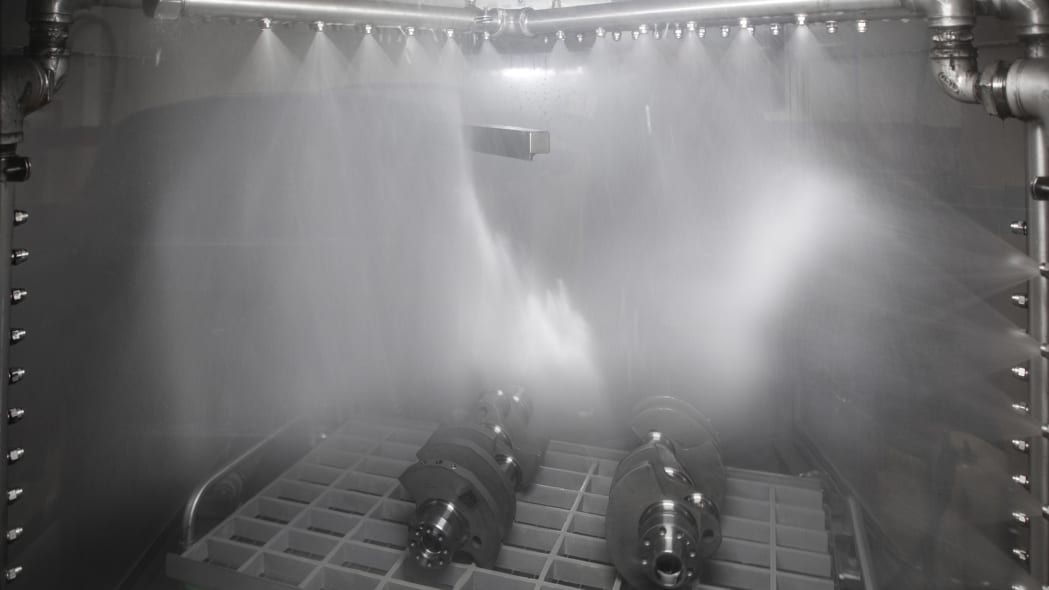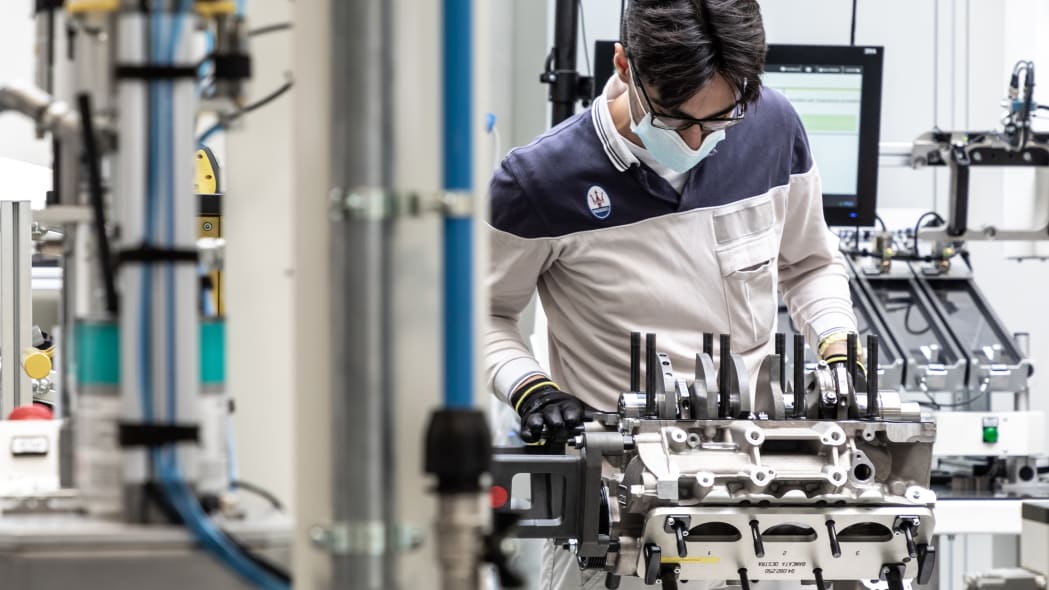There are no problems with high RPM on odd-firing engines. Ghibli have the rev limiter at 7200 but actually happily rev up to 8000.
V10 engine are all odd-firing, F1 3L v10 were revving up to 19k. Many race V6 engines were/are odd-firing because an odd firing crank is shorter and stronger. And a 90 degrees block is lower.
Group A biturbo (they were 2.5) were revving up to 8-9000 RPM.
The new Maserati MC20 v6 biturbo engine Nettuno is a 90 degrees odd-firing v6.
Medias say the following (the most detailed article is here
https://www.autoblog.com/2021/02/17/maserati-nettuno-v6-deep-dive/)
What's more, the Nettuno is designed as two three-cylinder motors working off a common crank containing four main journals and three rod journals that each hold two pistons. As an even-fire engine, the crank experiences a firing event every 120 degrees. These principles could all have been lifted from the Alfa Romeo 690T.
This is a non-sense. A three rod journals 90 v6 crank means odd-firing.
The pictures below clearly show three main journals.
Red line is 8000 RPM.
https://s.aolcdn.com/dims-global/di..._Nettuno_Engine_Lab_Washing-of-crankshaft.jpg
https://s.aolcdn.com/dims-global/di...tuno_Engine_Lab_Positioning-of-crankshaft.jpg
If you just want a little more on a 224 it’s easy: put the SEM restrictors in the Ghibli 2.0 position, you’ll get 1 bar instead of stock 0.8 bar of boost. All distributor injection and ignition ECUs are mapped up to 1 bar boost. Stock 224 turbos are not much different from the Ghibli ones, the compressor is smaller but the turbine seems to be the same.
If you want more than a little more then you can change to MS3 and map up to 1.2 bars. I've never heard about the knock on these Fuel Injected v6.
Now about the balance and weights. Let’s have a look at the numbers.
Stock 2.0 24v AM475 (not forged): 500gr with pin (I don’t know how much for the pin, must be 90-100).
Stock 2.0 Ghibli/QP4 piston (forged): 340gr + 75gr pin = 415gr
Aftermarket (not CPS but Italian) 2.0 24v Ghibli/QP4: 367gr + 78 pin = 442gr
Stock 2.8 18v (not forged): 503gr + 156 = 659gr
CPS (aftermarket) 2.8 18/24v: 463 + 142 = 605gr
As you can see there is a huge difference between stock and aftermarket piston weights. People just put them into the engines, nobody seems to care about the weight.
There is no magic: you can NOT design 2.5/2.8 pistons for stock 2.0 conrods that weight the same as 2.0 pistons: the bore are 91.6 against 82 mm. It’s a huge difference.
My custom made 2.5 24v pistons for the Ghibli 2.0 conrods: 384gr + 92 = 476gr. They are actually very light for the size, they were made by Gibtec in the US: this people are good.
You might save more weight on pistons with longer conrods, but steel is heavier than aluminum so not sure the overall would be lighter. If you do radically short pistons you'll certainly save but you need to keep some top to ring distance for multiple reasons.
More facts:
All 18v, AM475 and 2.8 24v engines share the same 137.35mm long conrods, except for the pin diameter on 2.8 (25mm instead of 22mm on others).
Ghibli/QP4/Racing have longer 145.3mm conrods, but you can’t use them on the other crank: longer rods have 2mm smaller big ends (these are actually v8 conrods).
Stock rods are high quality.
All 2.0/2.5/2.8 blocks have the same block to deck height. Conclusion: short rod engines have pistons with a bigger compression height (distance between the pin and the top of the piston crown). That’s why their pistons are heavy: they are taller and there is nothing to do about this. Even worse: the 2.0 short rod engines have the biggest compression height and thus the tallest pistons, they are unnecessarily heavy. That’s why Maserati modified this on Racing/Ghibli engines (and used them on QP4 2.0).
All engines have unnecessarily low R/L: 0.244 on 2.8, 0.23 on short rod 2.0, 0.217 on long rod 2.0. The max piston acceleration is quite low on all of them.
There are several combinations: you can use a 2.8 crank with stock rods with a 2.0 block: you get a longer stroke 2.2. Or a 2.0 crank with a 2.8 block stock conrods: 2.6 engine.
All possible combinations are still hyper square: even the 2.8 is still 94x67. You’ll find such ratio on F1 engines, nowhere else. It’s useless on low reving engines. Except for the block that is more compact.
The best would be to have a longer stroke, but a custom made crank costs a fortune.




